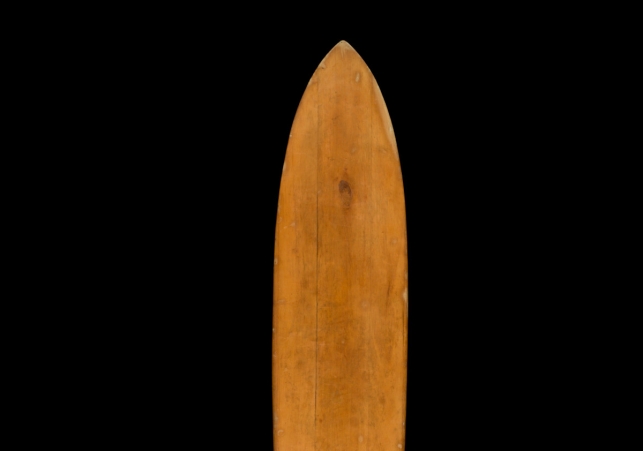Evolution of surfboard design

Riding the Waves of Innovation: The Evolution of Surfboard Design
Introduction: Surfing, once a niche activity practiced by Polynesian tribes, has evolved into a global phenomenon, captivating enthusiasts and athletes alike. At the heart of this evolution lies the surfboard, a quintessential tool that has undergone significant transformation over the centuries. From rudimentary wooden planks to high-tech composite materials, the evolution of surfboard design is a testament to human ingenuity and our relentless pursuit of mastering the waves.
Early Origins: The origins of surfing can be traced back thousands of years to the ancient Polynesians, who used wooden planks to navigate the ocean's swells. These early surfboards, known as "olo" or "alaia," were crafted from lightweight and buoyant woods such as koa or wiliwili. With a simple, finless design, surfers relied on skill and balance to ride the waves effectively.
Innovation and Adaptation: As surfing spread to new shores, so too did innovations in surfboard design. In the early 20th century, pioneers like Tom Blake introduced hollow wooden boards, which improved buoyancy and maneuverability. The addition of fins in the 1930s by California surfer Tom Blake revolutionized control and stability, enabling surfers to carve through waves with greater precision.
The Shortboard Revolution: The 1960s marked a pivotal moment in surfboard design with the advent of the shortboard. Influenced by the counterculture movement and advancements in materials like foam and fiberglass, shapers began experimenting with shorter and more maneuverable designs. Surfing icons like Bob McTavish and George Greenough pioneered the shortboard revolution, ushering in an era of radical performance and aerial maneuvers.
Innovation in Materials: Throughout the latter half of the 20th century and into the 21st century, advances in materials science transformed surfboard construction. Traditional materials like wood were replaced by lightweight foam cores and epoxy resins, offering a balance of durability and performance. Carbon fiber reinforcements and composite laminates further enhanced strength and responsiveness, pushing the boundaries of what was possible in surfboard design.
Hybrid and Alternative Designs: In recent years, surfboard designers have embraced hybrid and alternative shapes, blending elements from different board styles to optimize performance in various conditions. Fish, egg, and hybrid designs combine the speed and paddle power of longboards with the maneuverability of shortboards, offering versatility for surfers of all skill levels. Meanwhile, alternative materials such as recycled foam and bio-based resins reflect a growing emphasis on sustainability within the surfing community.
The Influence of Technology: The digital age has also left its mark on surfboard design, with computer-aided design (CAD) and simulation software enabling shapers to fine-tune board shapes and profiles with unprecedented precision. 3D printing technology has further expanded possibilities, allowing for rapid prototyping and customization tailored to individual surfers' preferences and performance needs.
Future Trends and Innovations: Looking ahead, the evolution of surfboard design shows no signs of slowing down. Emerging technologies such as hydrofoil systems and artificial intelligence promise to push the boundaries of performance and efficiency, opening new frontiers for surfers to explore. Additionally, advancements in sustainable materials and manufacturing processes are likely to play an increasingly prominent role, aligning with the surfing community's commitment to environmental stewardship.
Conclusion: From humble beginnings to cutting-edge innovations, the evolution of surfboard design is a testament to human creativity and adaptability. As surfers continue to push the limits of what is possible on the waves, one thing remains certain: the surfboard will always be at the heart of the surfing experience, shaping not only how we ride the waves but also how we perceive and interact with the ocean itself.
